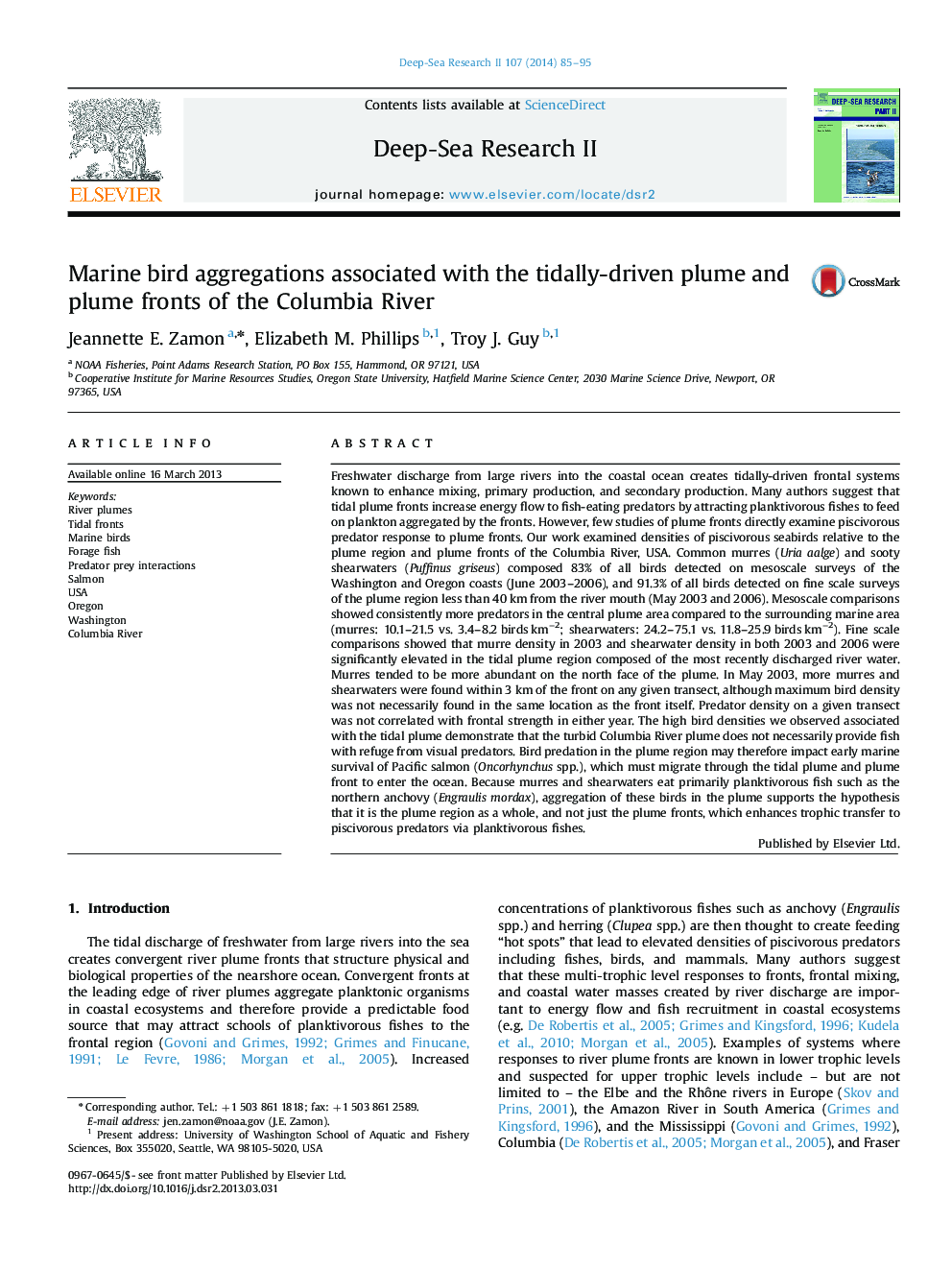| کد مقاله | کد نشریه | سال انتشار | مقاله انگلیسی | نسخه تمام متن |
|---|---|---|---|---|
| 4536354 | 1626433 | 2014 | 11 صفحه PDF | دانلود رایگان |
Freshwater discharge from large rivers into the coastal ocean creates tidally-driven frontal systems known to enhance mixing, primary production, and secondary production. Many authors suggest that tidal plume fronts increase energy flow to fish-eating predators by attracting planktivorous fishes to feed on plankton aggregated by the fronts. However, few studies of plume fronts directly examine piscivorous predator response to plume fronts. Our work examined densities of piscivorous seabirds relative to the plume region and plume fronts of the Columbia River, USA. Common murres (Uria aalge) and sooty shearwaters (Puffinus griseus) composed 83% of all birds detected on mesoscale surveys of the Washington and Oregon coasts (June 2003–2006), and 91.3% of all birds detected on fine scale surveys of the plume region less than 40 km from the river mouth (May 2003 and 2006). Mesoscale comparisons showed consistently more predators in the central plume area compared to the surrounding marine area (murres: 10.1–21.5 vs. 3.4–8.2 birds km−2; shearwaters: 24.2–75.1 vs. 11.8–25.9 birds km−2). Fine scale comparisons showed that murre density in 2003 and shearwater density in both 2003 and 2006 were significantly elevated in the tidal plume region composed of the most recently discharged river water. Murres tended to be more abundant on the north face of the plume. In May 2003, more murres and shearwaters were found within 3 km of the front on any given transect, although maximum bird density was not necessarily found in the same location as the front itself. Predator density on a given transect was not correlated with frontal strength in either year. The high bird densities we observed associated with the tidal plume demonstrate that the turbid Columbia River plume does not necessarily provide fish with refuge from visual predators. Bird predation in the plume region may therefore impact early marine survival of Pacific salmon (Oncorhynchus spp.), which must migrate through the tidal plume and plume front to enter the ocean. Because murres and shearwaters eat primarily planktivorous fish such as the northern anchovy (Engraulis mordax), aggregation of these birds in the plume supports the hypothesis that it is the plume region as a whole, and not just the plume fronts, which enhances trophic transfer to piscivorous predators via planktivorous fishes.
Journal: Deep Sea Research Part II: Topical Studies in Oceanography - Volume 107, September 2014, Pages 85–95
